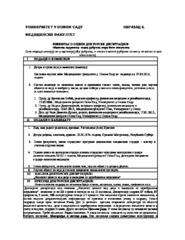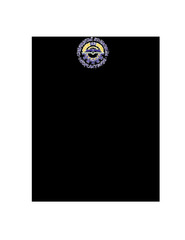Приказ основних података о дисертацији
Kvalitet života kod dece i omladine sa cerebralnom paralizom
Quality of life in children and youth with cerebral palsy
| dc.contributor.advisor | Mikov, Aleksandra | |
| dc.contributor.other | Bobić, Branislav | |
| dc.contributor.other | Švraka, Emira | |
| dc.contributor.other | Demeši-Drljan, Čila | |
| dc.contributor.other | Tomašević-Todorović, Snežana | |
| dc.contributor.other | Dimitrijević, Lidija | |
| dc.creator | Krasnik, Rastislava | |
| dc.date.accessioned | 2016-07-18T06:40:40Z | |
| dc.date.available | 2016-07-18T06:40:40Z | |
| dc.date.available | 2020-07-03T13:25:24Z | |
| dc.date.issued | 2016-07-08 | |
| dc.identifier.uri | http://www.cris.uns.ac.rs/DownloadFileServlet/Disertacija146054202660569.PDF?controlNumber=(BISIS)100635&fileName=146054202660569.PDF&id=5369&source=NaRDuS&language=sr | sr |
| dc.identifier.uri | https://nardus.mpn.gov.rs/handle/123456789/5920 | |
| dc.identifier.uri | http://www.cris.uns.ac.rs/record.jsf?recordId=100635&source=NaRDuS&language=sr | sr |
| dc.identifier.uri | http://www.cris.uns.ac.rs/DownloadFileServlet/IzvestajKomisije146054203350881.PDF?controlNumber=(BISIS)100635&fileName=146054203350881.PDF&id=5370&source=NaRDuS&language=sr | sr |
| dc.description.abstract | Istraživanje je obuhvatilo primenu generičkog upitnika (Kiddy-KINDL, Kid-KINDL, Kiddo-KINDL i verzije za roditelje Kiddy-KINDL i KINDL), bolest-specifičnog upitnika (CPQOL-Child i CPQOL-verzija za roditelje), kao i upitnika za procenu porodičnog kvaliteta života dece sa cerebralnom paralizom (Family quality of life survey. Main caregivers of people with intellectual or developmental disabilities). Analizom je obuhvaćeno 70. dece i omladine sa cerebralnom paralizom i njihovih roditelja. Kvalitet života dece sa CP uzrasta 4-17 godina, ispitan generičkim upitnikom ne pokazuje statistički značajne razlike u svim ispitivanim domenima bez obzira na nivo motoričkog onesposobljenja prema GMFCS. Kvalitet života sa aspekta roditelja ispitan generičkim upitnikom pokazuje da deca uzrasta 3-6 godina sa CP nivoa I-II prema GMFCS, imaju statistički značajno bolji kvalitet života u domenu zdravstvenog i emocionalnog stanja, samopoštovanja i socijalnog života, dok deca uzrasta 7-17 godina imaju statistički značajno bolji kvalitet života samo u domenu emocionalnog stanja. Ova razlika se može objasniti činjenicom da su roditelji starije dece sa CP prošli kroz proces prihvatanja bolesti tokom vremena. Kvalitet života dece sa CP uzrasta 8-12 godina, ispitan bolest-specifičnim upitnikom ne pokazuje statistički značajne razlike u svim ispitivanim domenima bez obzira na nivo motoričkog onesposobljenja prema GMFCS. Kvalitet života sa aspekta roditelja ispitan bolest-specifičnim upitnikom pokazuje da deca uzrasta 4-12 godina sa CP nivoa I-II prema GMFCS, imaju statistički značajno bolji kvalitet života u domenima: socijalno blagostanje i prihvatanje, osećanje o funkcionisanju, učešće i fizičko zdravlje, kao i bol i uticaj invalidnosti. Nema razlike u stavu deteta i roditelja u domenima kvaliteta života mereno generičkim upitnikom. Međutim, upotrebom bolest-specifičnog upitnika dobija se podatak da roditelji ocenjuju kvalitet života deteta značajno lošije u domenima: osećaj o funkcionisanju, kao i učešće i fizičko zdravlje. Roditelji dece sa CP nivoa I-II prema GMFCS navode bolji kvalitet porodičnog života u odnosu na roditelje dece nivoa III-V prema GMFCS, ali bez statističke značajnosti. Analizom ispitivanih dimenzija domena u sumarnoj skali utvrđeno je da je roditeljima najvažnija dimenizija značaj porodičnog kvaliteta života. Ostale ispitivane dimenzije domena (mogućnost, inicijativa, postignuće, stabilnost i zadovoljstvo) bile su niže ocenjene u odnosu na dimenziju značaj, a međusobno su bile ujednačene. Za procenu kvaliteta života kod dece sa CP ipak se preporučuje upotreba bolest-specifičnog upitnika u cilju detektovanja domena od interesa, kako bi se pravovremenom akcijom zdravstenih profesionalaca, podrškom na nivou zajednice, kao i društva u celini, uklonile poteškoće i omogućio kvalitetan život detetu sa cerebralnom paralizom i njegovoj porodici. | sr |
| dc.description.abstract | The study included the use of generic questionnaire (Kiddy-KINDL, Kid-KINDL, Kiddo-KINDL versions for parents Kiddy-KINDL and KINDL), a disease-specific questionnaire (CPQOL-Child and CPQOL-version for parents), as well as the questionnaire for evaluation of family quality of life of children with cerebral palsy (FQOL-DD). The analysis included 70 children and youth with cerebral palsy and their parents. The quality of life of children with CP aged 4-17 years, examined by a generic questionnaire, shows no statistically significant differences in any investigated domains regardless of the level of motor disability according to GMFCS. The quality of life from the parent aspect obtained by the generic questionnaire shows that children aged 3-6 years with CP levels I-II GMFCS, had a significantly better quality of life related to health and emotional status, self-esteem and social life, while children aged 7-17 years had a significantly better quality of life only in the domain of emotional state. This difference can be explained by the fact that parents of older children with CP had the time to pass through the process of accepting the disease. The quality of life of children with CP aged 8-12 years, examined by the disease-specific questionnaire, shows no statistically significant differences in any investigated domains regardless of the level of motor disability according to GMFCS. The quality of life from the parent aspect according to the disease-specific questionnaire shows that children aged 4 -12 years with CP levels I-II GMFCS had a significantly better quality of life in following domains: social well-being and acceptance, feeling of functioning, participation and physical health, as well as the pain impact and disability. There is no difference in the attitude of the child and parents in the domains of quality of life as measured by the generic questionnaire. However, by using disease-specific questionnaires it is clear that parents assess the quality of life of the child significantly worse in the following domains: a sense of functioning, of participation and physical health. Parents of children with CP levels I-II GMFCS report better quality of family life in comparison to the parents of children with level III-V GMFCS, but without statistical significance. By the analysis of the dimensions of domains tested in the aggregate scale it was found that for parents the most important dimension was the family quality of life. Other tested dimensions of domains (the ability, initiative, achievement, stability and satisfaction) were assessed lower in comparison to the dimension of the importance, and they were equable. For assessment of the quality of life in children with CP the use of disease-specific questionnaires is recommended in order to detect domains of interest, with the aim to introduce timely action of health professionals, support at the community level and in a society as a whole, as well as to remove difficulties and facilitate quality of life for the children with cerebral palsy and their families. | en |
| dc.language | sr (latin script) | |
| dc.publisher | Универзитет у Новом Саду, Медицински факултет | sr |
| dc.rights | openAccess | en |
| dc.rights.uri | https://creativecommons.org/licenses/by-nc-nd/4.0/ | |
| dc.source | Универзитет у Новом Саду | sr |
| dc.subject | cerebralna paraliza | sr |
| dc.subject | Cerebral Palsy | en |
| dc.subject | dete | sr |
| dc.subject | kvalitet života | sr |
| dc.subject | Child | en |
| dc.subject | Quality of Life | en |
| dc.title | Kvalitet života kod dece i omladine sa cerebralnom paralizom | sr |
| dc.title | Quality of life in children and youth with cerebral palsy | en |
| dc.type | doctoralThesis | en |
| dc.rights.license | BY-NC-ND | |
| dcterms.abstract | Миков, Aлександра; Бобић, Бранислав; Шврака, Емира; Демеши-Дрљан, Чила; Томашевић-Тодоровић, Снежана; Димитријевић, Лидија; Красник, Растислава; Квалитет живота код деце и омладине са церебралном парализом; Квалитет живота код деце и омладине са церебралном парализом; | |
| dc.identifier.fulltext | http://nardus.mpn.gov.rs/bitstream/id/34397/IzvestajKomisije3851.pdf | |
| dc.identifier.fulltext | https://nardus.mpn.gov.rs/bitstream/id/34397/IzvestajKomisije3851.pdf | |
| dc.identifier.fulltext | https://nardus.mpn.gov.rs/bitstream/id/34398/Disertacija3851.pdf | |
| dc.identifier.fulltext | http://nardus.mpn.gov.rs/bitstream/id/34398/Disertacija3851.pdf | |
| dc.identifier.rcub | https://hdl.handle.net/21.15107/rcub_nardus_5920 |



